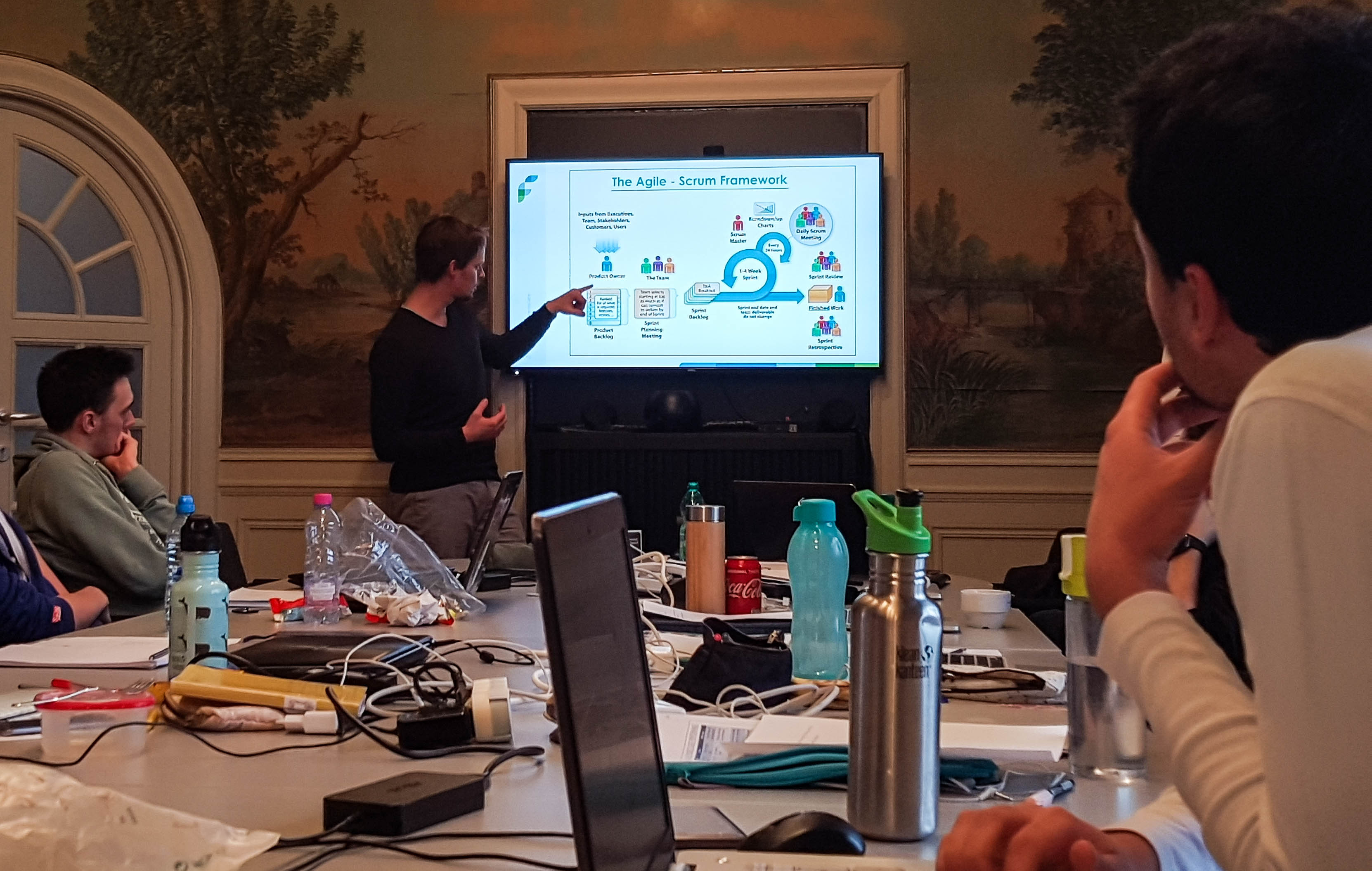How can project management deliver successful projects?
How do we manage our projects at Formica?

Our project manager, Andy Scherpereel, was invited at the University of Ghent to give a lecture to shed a light on project management in practice. Before we go into detail on the project approach of Formica, we want to thank Professor Veronique Hoste for inviting Formica to her Project Management course.
There is always a difference between theory and practical execution. No client or project is the same. It’s simple: one size doesn't fit all in project management.
What defines a successful project? Is the only goal a happy client in the end? In project management, a project is successful when its completed on time and within the predetermined budget. According to the CHAOS report, only 1/3 of projects are successful. Another finding is that size does matter. How bigger the project, the lower the success rate. Approaching a big project as a collection of smaller projects can bring success rates up.
Waterfall VS Agile
There are two main methodologies for approaching a development project. The oldest methodology is called the waterfall method. It is a linear and sequential approach to software development. It starts with an analysis of the project, which leads to a project plan with predetermined phases. You can’t start the next phase before the previous is completed. That means no way back and no interference of the client in the development phase. The time span between the analysis and the end product is big. What if the needs of the client changed along the way? What if there are contextual factors who have an effect on the project? Throughout time, PM’s came to the conclusion that the waterfall methods often leads to unhappy end-users and isn’t the way to handle projects.
And then... The agile way of working emerged and that’s also how we like to work at Formica. It all starts with the needs of our clients. Together with our client, we discuss what the requirements are of the solution we are going to build. This gets collected in a backlog and is the foundation of the project. Instead of only presenting the end product to the client, we work in sprints from 1 to 4 weeks.
After each sprint, the clients get a functional product that they can review. Sprint after sprint, the client can already use and test his product so adjustments can be made along the way. Through daily stand-up meetings, we keep track of the progress of the project and let our developers take ownership of their responsibilities in the project. The numbers don’t lie. Using the agile method for big projects gives a success rate of 18%, while the waterfall approach only delivers 3% successful big projects.
Estimation
Estimates are a key factor in project management. They are the foundation for the project budget and planning. It’s important to keep in mind that estimations are always biased by personal factors like previous project experiences or even the mood of the day.
There are some different techniques for estimations but at Formica we often use parametric estimating to estimate the different requirements with the team. It means that we won’t use absolute values when estimating but compare the different requirements through a relative, but scalable, measurement with for example our planning poker set with the Fibonacci numbers. By adding a certain weight to the relative numbers, you get an accurate view of the workload and budget.
Project management office
At Formica, we work with a project management office. This is a two-weekly meeting where all our project managers gather to discuss their projects. Did you reach your goals for the past weeks? What is on planning for next week? Are there any problems along the way? By approaching this as a team, we can give each other advice, solve problems together, and avoid pitfalls in the future. Teamwork makes the dream work, right?
Are you ready to contribute to successful projects? We are looking for different profiles to join our team.
Contact us






